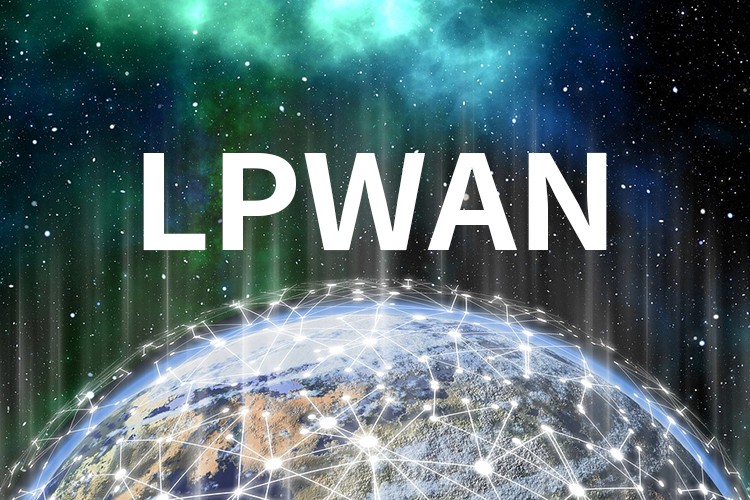With the rise of large-scale M2M communications, low-power wide area networks (LPWAN) are undoubtedly a hot topic. Still, users unfamiliar with this wireless technology may have difficulty understanding the current landscape and the differences between the different technologies. To help you learn more about LPWAN, we’ll reveal five common myths about Low Power Wide Area Networks (LPWAN) in the Internet of Things (IoT).

1. All LPWAN technologies are low power consumption
The term LPWAN is self-explanatory. Even if you haven’t heard of LPWAN (Low Power Wide Area Network), you may still find that it is designed for low-power IoT applications. However, don’t fall into the misconception that energy consumption of LPWAN solutions is consistent. While all of these technologies promise years of battery life, there is a wide gap in energy efficiency between the different technologies under the same conditions. Typically, this gap comes down to two main factors: the broadcast time of each message; and the amount of packet overhead required. Techniques that send the same message multiple times for redundancy increase the total broadcast time and power consumption respectively. Additionally, the extra energy spent on handshaking can quickly drain the battery.
2. Most LPWAN solutions are standards-based
As the word “standard” gains significant traction in the IoT era, vendors are looking to turn their solutions into a standard. You can easily call a proprietary technology a standard by publishing technical specifications developed by a third party, however, this does not prove the quality and long-term viability of the technology. Not to mention, in some cases, such as LoRa networks, only parts of the protocol stack are truly open. While the MAC layer (LoRaWAN) is public, the PHY layer (LoRa) is completely proprietary and tied to a single chipset vendor.
On the other hand, few LPWAN technologies have been standardized and recognized by impartial and mature standards development organizations. One is a cellular LPWAN solution implementing the 3GPP standard, and the other is telegram splitting as specified by the ETSI standard over low-throughput networks – TS 103 357. Through a formal, rigorous evaluation process, these technologies are proven to have compelling, future-proof performance across a variety of networking standards, while also providing a transparent, robust technology framework to facilitate vertical and horizontal interactions. Operability.
3. Unlicensed LPWAN is unreliable
Unlicensed spectrum has long been associated with reduced radio performance and limited scalability due to high interference in shared bands. Unlicensed spectrum is now the preferred choice for many radio developers due to its low cost and high flexibility; but this notoriety won’t go away easily. Reliability issues are further exacerbated when it comes to LPWAN and its simplified MAC layer design. For this reason, many would argue for the increasing use of cellular LPWANs in demanding industrial applications. The truth is, you get the best of both worlds with interference-resistant technology designed from the ground up. This solution provides robust, scalable and cost-effective connectivity while eliminating dependence on network operators.
4. Public LPWAN is ubiquitous and has no borders
The appeal of ubiquitous coverage provided by public LPWANs may be too good to be true. Cross-border roaming remains a major challenge for technologies like LoRa and NB-IoT, which rely on roaming agreements between different telecom providers. Furthermore, even if roaming is not a prerequisite for many use cases, public LPWAN coverage within national borders is not ubiquitous. Urban areas are generally less of a concern, but remote industrial areas require extra caution. You’ll want to check your network operator’s coverage map to make sure your facility doesn’t overlap with “blind spots.”
Additionally, the lack of support for cell handover is another factor to consider when it comes to NB-IoT. If the device is moved from its assigned unit, the entire registration process must be performed again, which may take up to 30 seconds. Since this is cumbersome and power-hungry, NB-IoT is more suitable for fixed use cases.
5. LPWAN and other wireless solutions are mutually exclusive
There are many differences between LPWAN and traditional wireless technologies when it comes to different IoT use cases. Still, it’s important to know that LPWAN networks don’t live in a bubble. Quite the contrary, many scenarios benefit from the enhanced flexibility and functionality brought by hybrid wireless architectures. LPWAN and 5G, especially private 5G in the CBRS band, can actually work together to create a powerful IoT architecture. This is especially true in challenging environments where long distances often mean terrestrial backhaul adds additional cost and complexity to get LPWAN-generated data from the gateway to edge computing resources or the cloud. Private 5G provides cost-effective, reliable over-the-air service quality for massive IoT data. Likewise, LPWAN extends the energy-saving and high-data-rate capabilities of short-range technologies such as Bluetooth Low Energy devices to provide reliable and robust backhaul for long-range communications in complex indoor environments and remote locations.
Expected to generate a market value of $65 billion by 2025, LPWAN is quickly establishing its place in the IoT space. With a lot of attention being paid to this wireless category, it’s important to understand the truth behind the existing solutions.Wireless data transmission